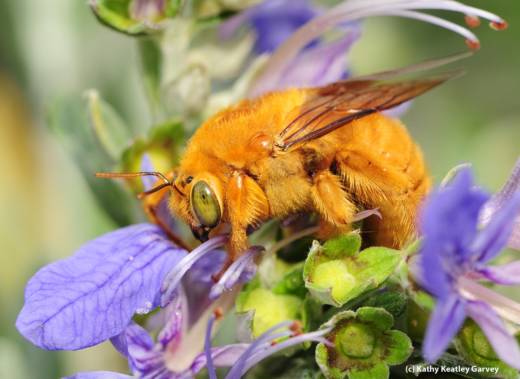When we think of bees, most of us probably picture lots of buzzing insects flying around together, collecting pollen and making honey.
S. Hollis Woodard, a bee researcher and assistant professor in UC Riverside's Entomology Department, says this picture isn't the full one. She says most bees don't live in groups. Most are actually solitary creatures.
"We think there are about 20,000 species of bees, and the overwhelming majority of them are solitary. Most of the bees you would probably see showing up in your garden are solitary," she said.
Woodard's interest in bees began as a way to learn more about social evolution. She wanted to study bees that live in big social groups. But now she finds herself studying a lot of solitary species, too. That's because her office at UC Riverside is close to the desert. And most bees in the desert live alone.
There are only a few groups that live in big social systems, like bumblebees and honeybees. Woodard says there’s a spectrum of how social bees are. Some bees are completely solitary and socialize only when they are mating. Other bees might live in small little social groups, or socialize occasionally, but she says most bees keep to themselves, like the carpenter bee.
